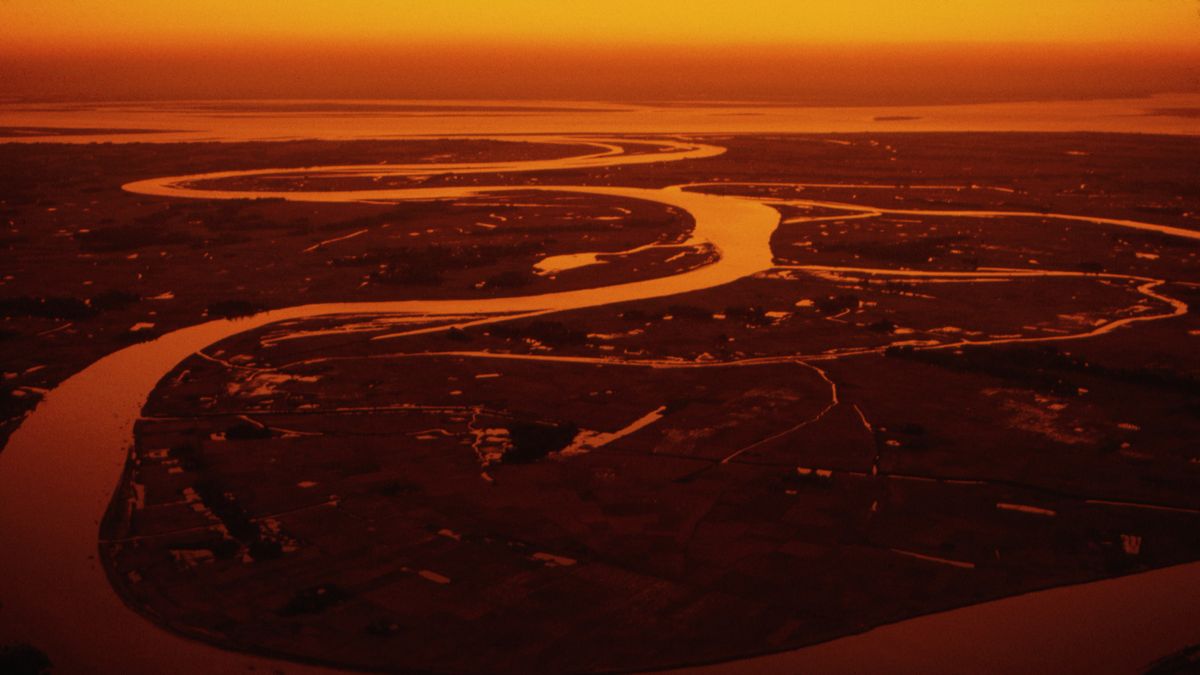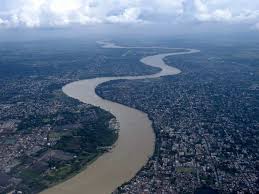A devastating earthquake that occurred about 2500 years ago suddenly changed the course of the Ganga. American scientists have warned that such an earthquake can change the course of the Ganga again in the future.
It is worth noting that the Ganga is one of the largest rivers in the world. It travels from the western Himalayas to the east and travels more than two and a half thousand kilometers and finally merges into the Bay of Bengal. During this long journey, it forms a labyrinth of waterways along with other major rivers including the Brahmaputra and Meghna.

In the study, scientists have confirmed that the intensity of this earthquake that occurred about two and a half thousand years ago must have been between seven and eight on the Richter scale. Scientists have also expressed the apprehension that if such a devastating incident occurs again in the future, then about 14 crore people may be affected by it.
Scientists have feared that this devastating earthquake changed the main route of the river in present-day Bangladesh, which is still a highly vulnerable area to major earthquakes. Any major earthquake in this densely populated region can have devastating effects.
Researchers have also confirmed that such a big change in the river route has never been seen before. Regarding this, Michael Steckler, a geologist at the Lamont-Doherty Earth Observatory of Columbia Climate School in the US and a researcher associated with the study, said in a press release, “I don’t think we have ever seen such a big earthquake anywhere.”

The results of this study conducted by international researchers have been published in the international journal Nature Communications on June 17, 2024.
Scientists have recorded many changes in the river route. Let us tell you that these changes are called avulsion. Some of these changes are also caused by earthquakes. Like other rivers flowing through major deltas, the Ganges has also often changed its course naturally even without an earthquake.
The sediment flowing from upstream accumulates in the channel, causing this part to rise above the surrounding floodplain. It grows until the water breaks through it and creates a new path for itself. However, this event does not happen suddenly. It can take years or decades to happen. But according to Steckler, an earthquake can do this immediately.

Lead researcher associated with the study and assistant professor at Wageningen University in the Netherlands, Elizabeth Liz Chamberlin, says about this, “In the case of a large river like the Ganges, it was not confirmed before that earthquakes can cause erosion in the deltas of large rivers like the Ganges.”
With the help of satellite images, researchers have identified the main stream of the Ganges river about 100 kilometers south of Dhaka. This low-lying area is about one and a half kilometers wide, and runs parallel to the existing river for about 100 kilometers. This area filled with mud is often filled with floodwater. It is mainly used by the local people for paddy cultivation.
Why did the devastating earthquake occur?
While exploring the region in 2018, Chamberlain and other researchers found vertical layers of light-colored sand cutting horizontal layers of soil. This feature, known as a seismite, is formed by earthquakes. The seismites they found were 30 to 40 centimeters wide and cut through 3 to 4 meters of soil.
Further investigation revealed that these seismites were systematically aligned, indicating that they were formed at the same time. Chemical analysis of the sand and soil showed that a devastating earthquake of seven to eight magnitudes occurred in the region about two and a half thousand years ago, which caused these changes.

The researchers speculate that there could be two possible reasons for this earthquake, the first is a subduction zone in the south and east, where a huge plate of oceanic crust is pushing itself under Bangladesh, Myanmar and northeastern India. The second is a huge fault at the foot of the Himalayas in the north, which is growing as the Indian subcontinent slowly collides with Asia.
Another study led by Steckler in 2016 showed that the region is extremely dangerous, with pressure building up and the possibility of another devastating earthquake. The last major earthquake in the region was in 1762, which generated a deadly tsunami that reached Dhaka. Another quake is estimated to have occurred around 1140 AD.
The 2016 study also predicted that if such an earthquake were to occur again, 140 million people could be affected.




